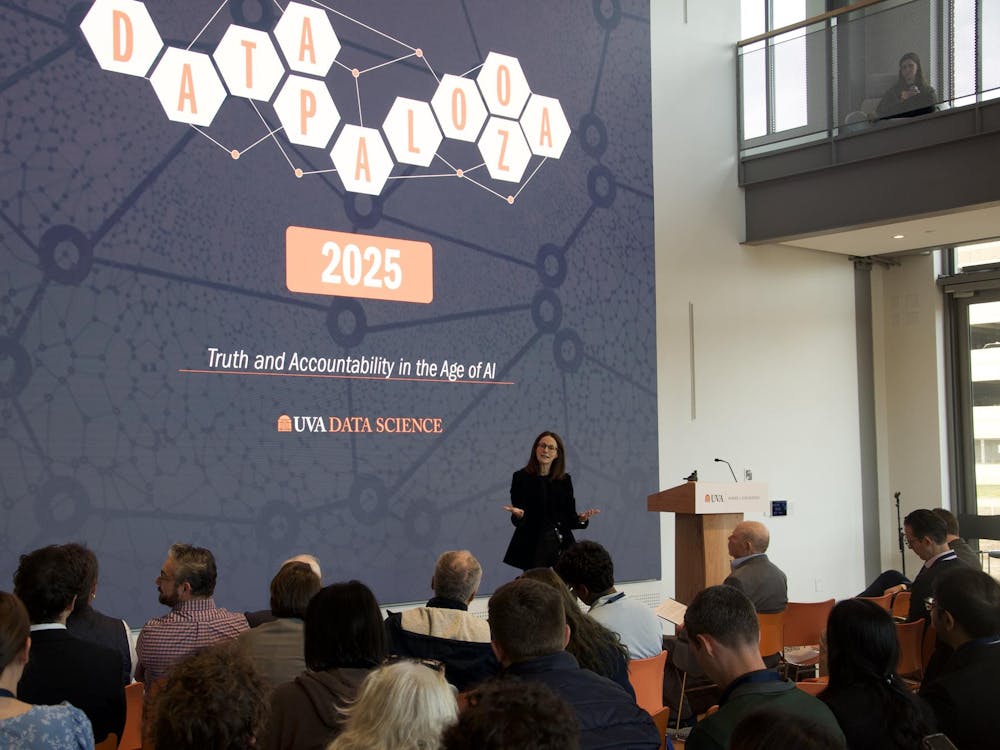 Examination of the prosecution's witnesses continued yesterday in the seventh day of the trial of former University student George Huguely, as expert witnesses described their analysis of former University student Yeardley Love's brain. Huguely is charged with the murder of Love, his former girlfriend.
Examination of the prosecution's witnesses continued yesterday in the seventh day of the trial of former University student George Huguely, as expert witnesses described their analysis of former University student Yeardley Love's brain. Huguely is charged with the murder of Love, his former girlfriend.
Dr. Christine Fuller, a neuropathology Prof. at Virginia Commonwealth University, conducted the initial study of Love's brain, after the initial autopsy. Fuller identified contusions and hemorrhaging in the space surrounding the surface of the brain, which indicates blunt force trauma.
"It's trauma. Period," Fuller said. "It isn't anything else."
Fuller said these injuries can be the results of a fall, but usually not one from ground level. She said being punched severely, particularly while against a flat surface, could result in similar contusions.
Fuller found Love's injuries in the brain stem, the part of the brain which controls basic functions such as consciousness, respiration and circulation, she said. The location of the hemmorhaging in the brain stem, toward the back and side, make the cause of the injury clear, she added.
Fuller explained these contusions in the cerebral hemispheres might cause headaches or small strokes if the patient survived, but the hemorrhaging and contusions she identified in another region of the brain have more severe possible consequences.
This damage "could potentially cause sudden death," or death within several hours, Fuller said. She later testified during cross-examination she believes Love died two hours after receiving these injuries.
Fuller said the type of hemhorraging found in Love's brain is not associated with cardiopulmonary resuscitation, which is the defense's claim.
Fuller told the court she agreed with the report of Dr. Beatriz Lopes, a pathology professor at the Medical School who conducted a second analysis of Love's brain.
Lopes, who also testified as an expert yesterday, conducted a test Fuller did not have access to - the Beta amyloid precursor protein stain, a process which shows a better time of injury than other methods, she said.
The prosecution re-questioned medical examiner Bill Gormley who testified Monday. Gormley ruled out alcohol and amphetamines for the cause of Love's death, citing Love's 0.14 blood alcohol content and 0.05 for amphetamines. Gormley said the cause of death was "most likely the cardiac arrest" with "contusions to the head" serving as the primary cause.
A slew of forensic specialists took the witness stand for the remainder of the trial.
Curt Harper, a forensic toxicologist in the University's Department of Forensic Science said although amphetamines such as Adderrol can eventually lead to death, Love exhibited a blood level ten times less than the lethal dose.
The prosecution also brought Jenny Mouer, a latent print expert who explained tests she had performed on Love's bedroom door and a crushed Natural Light beer can. The white door was on display in the courtroom and visibly showed traces of black powder, which had been used to perform the fingerprint tests. Mouer said none of the prints on the door and the beer-can were usable. "There were no latent prints of value for identification purposes," she said.
The Commonwealth's Attorney Chappman presented his next witness, Marjorie Harris, with photographic images of the crime scene. Though the pictures were not explicitly shown to the audience, they were translucent and could be identified from the back as images of Love and a bed covered in red stains.
Harris, an expert of blood stain patterns, classified the majority of the stains on the comforter, bed-skirt and pillow as transfer stains, which indicate the transfer of blood from a blood-bearing source to another source.
When Chappman presented Harris with a picture of a blood-stained pillow, he inquired whether it was possible for Harris to determine whether the image was indicative of "fabric moving over a person or a person moving over fabric," but Harris said it was impossible to speculate.
"It's much more difficult working with just photographs," Harris said.
DNA specialist Angie Rainey provided the final testimony in day seven of the Huguely trial and explained more than 30 pieces of evidence.
The evidence included Love's left and right fingernail clippings, her underwear, swabs from her bedroom floor, her pillow case, scrapings from both of Huguely's hands, items of clothing found in Huguely's apartments and swabs taken from the bath-mats, shower curtains and towels in Huguely's and Love's apartments.
Rainey said the blood found under Love's fingernails belonged to Love and the scrapings taken from Huguely's hands placed both Love and Huguely at the crime-scene.
The trial resumes today at 9 a.m.






